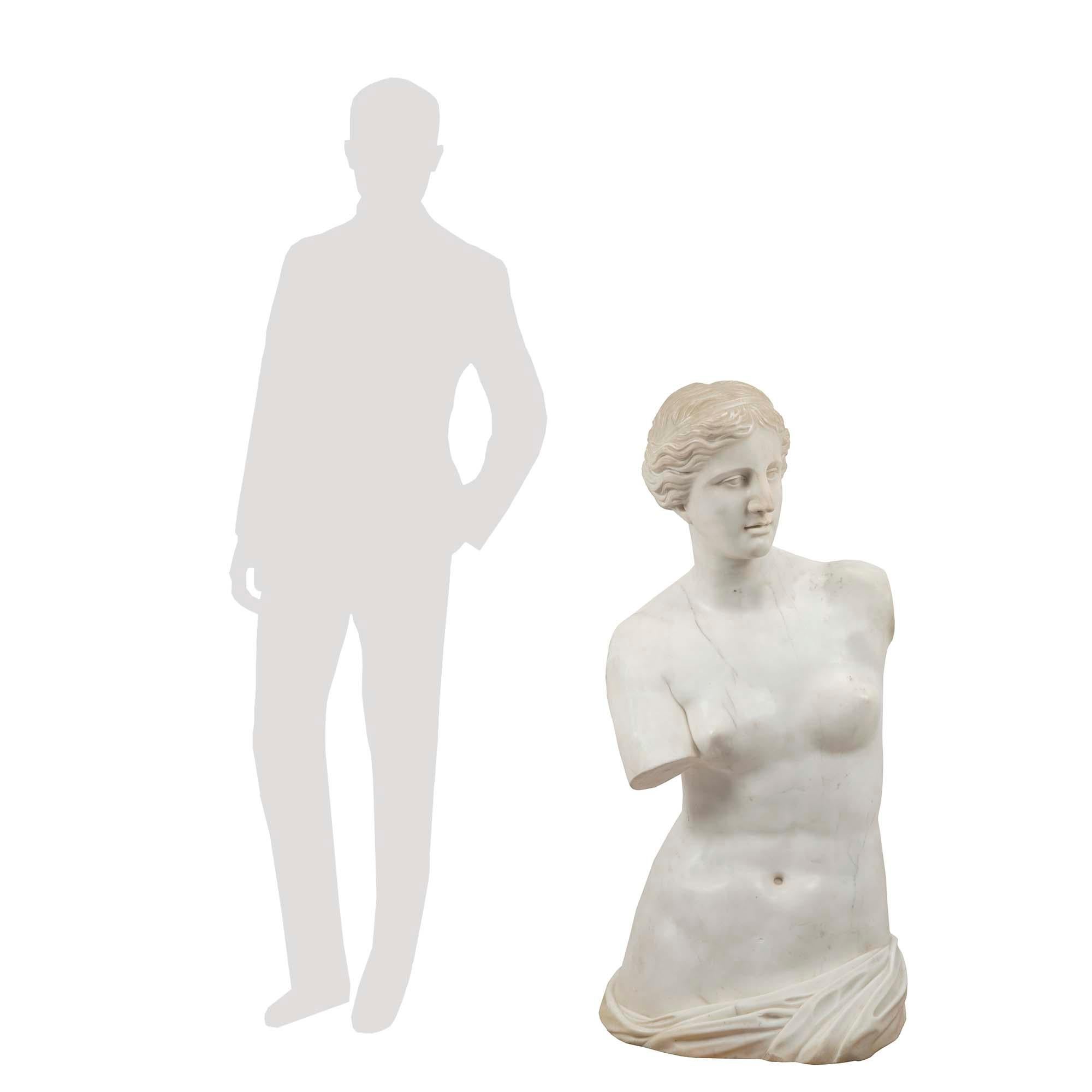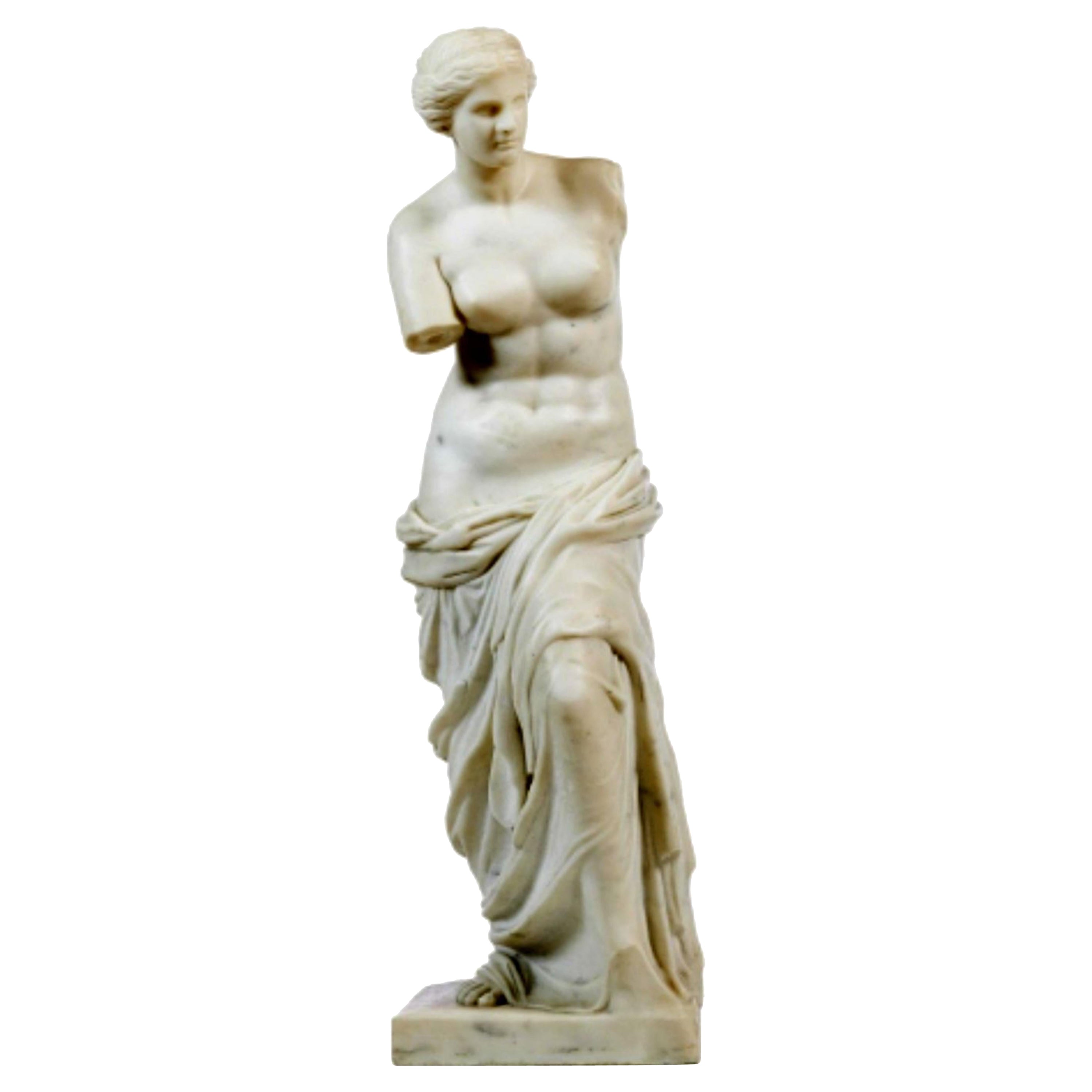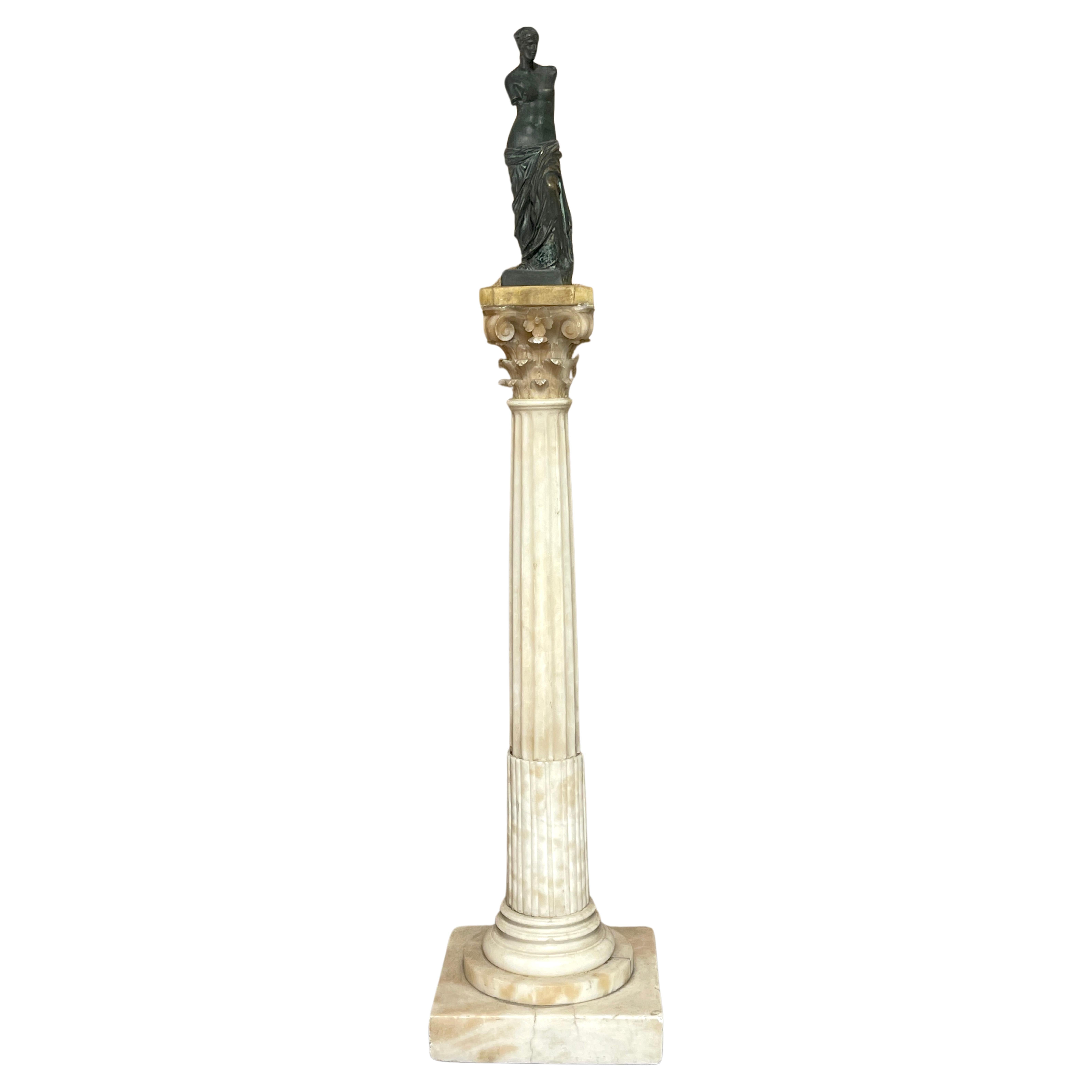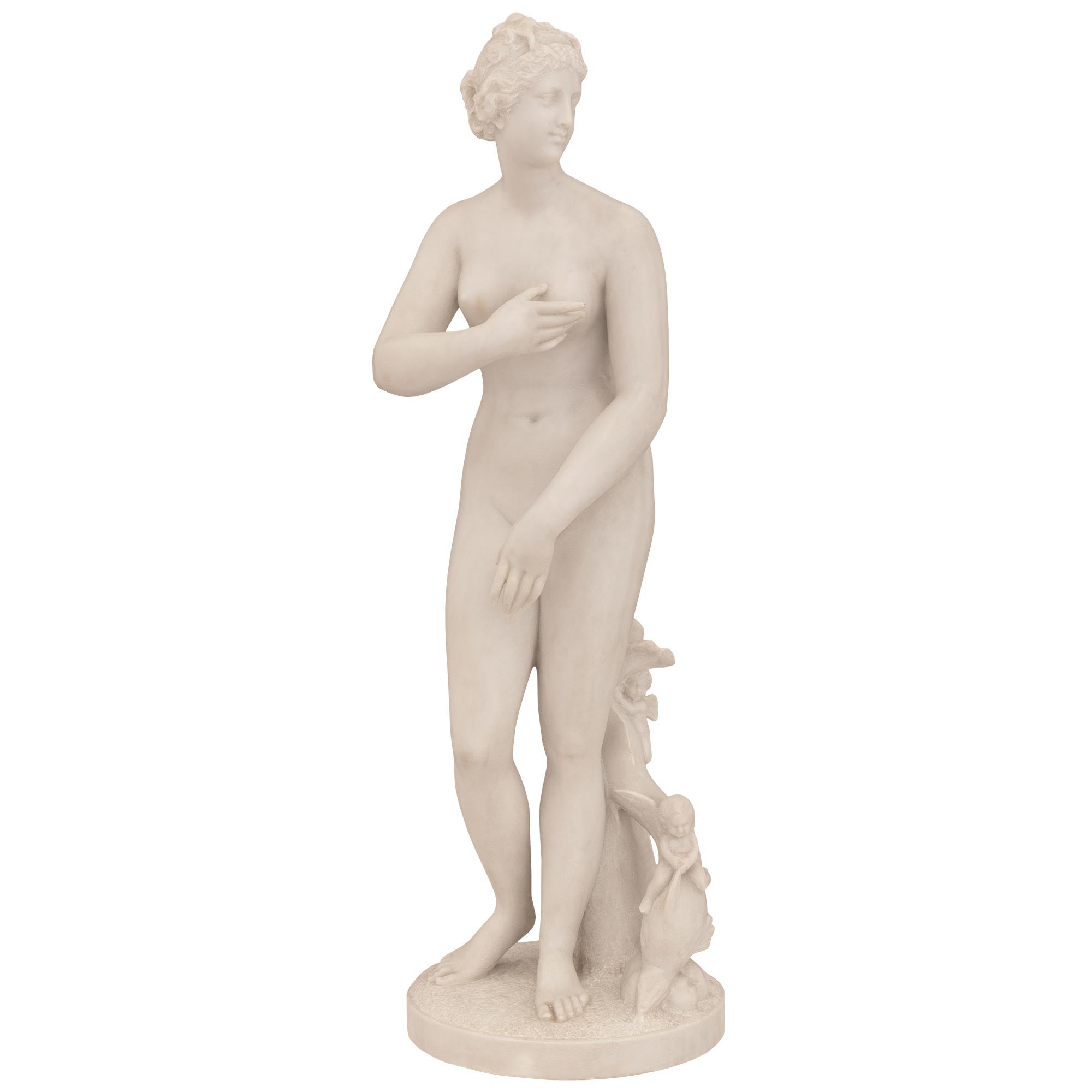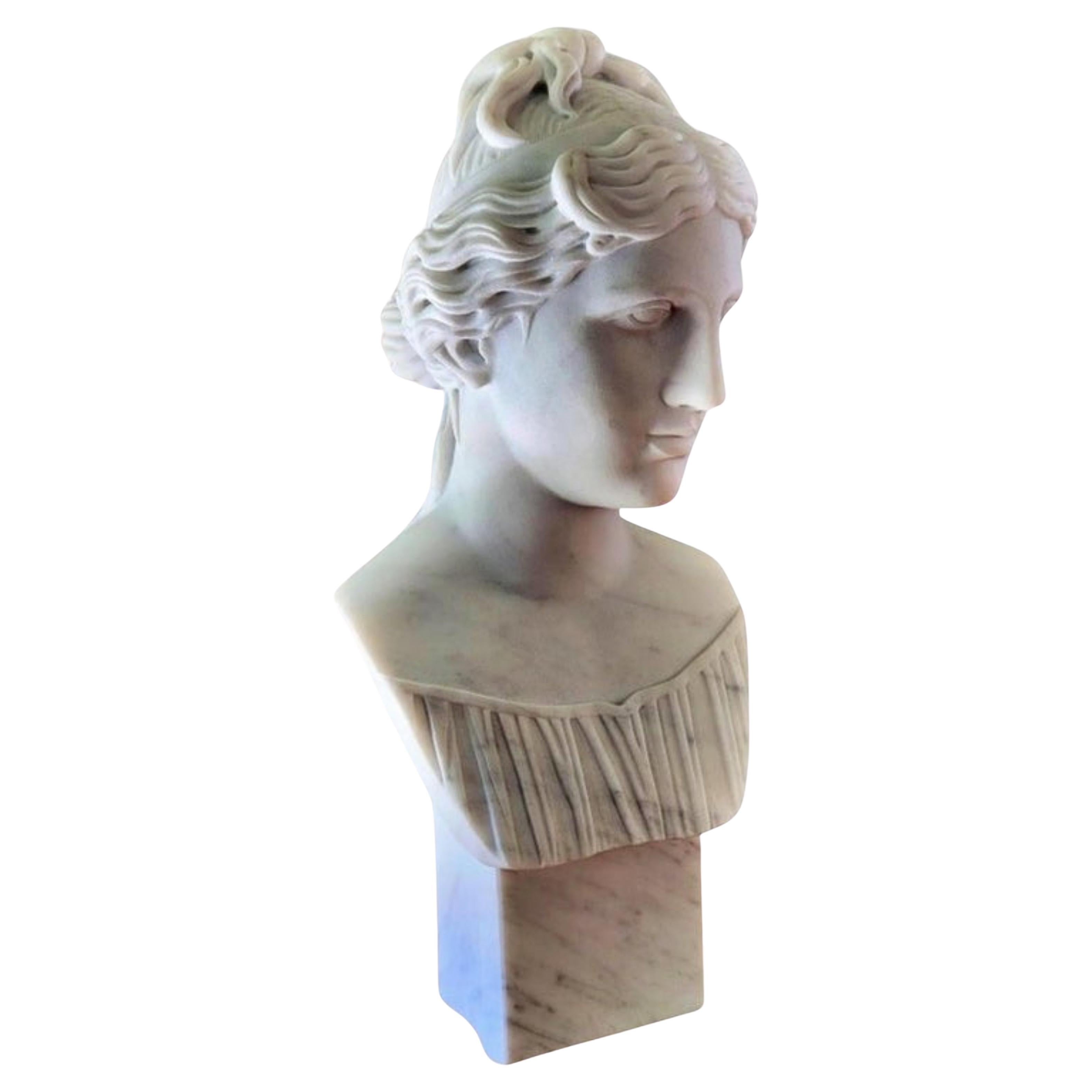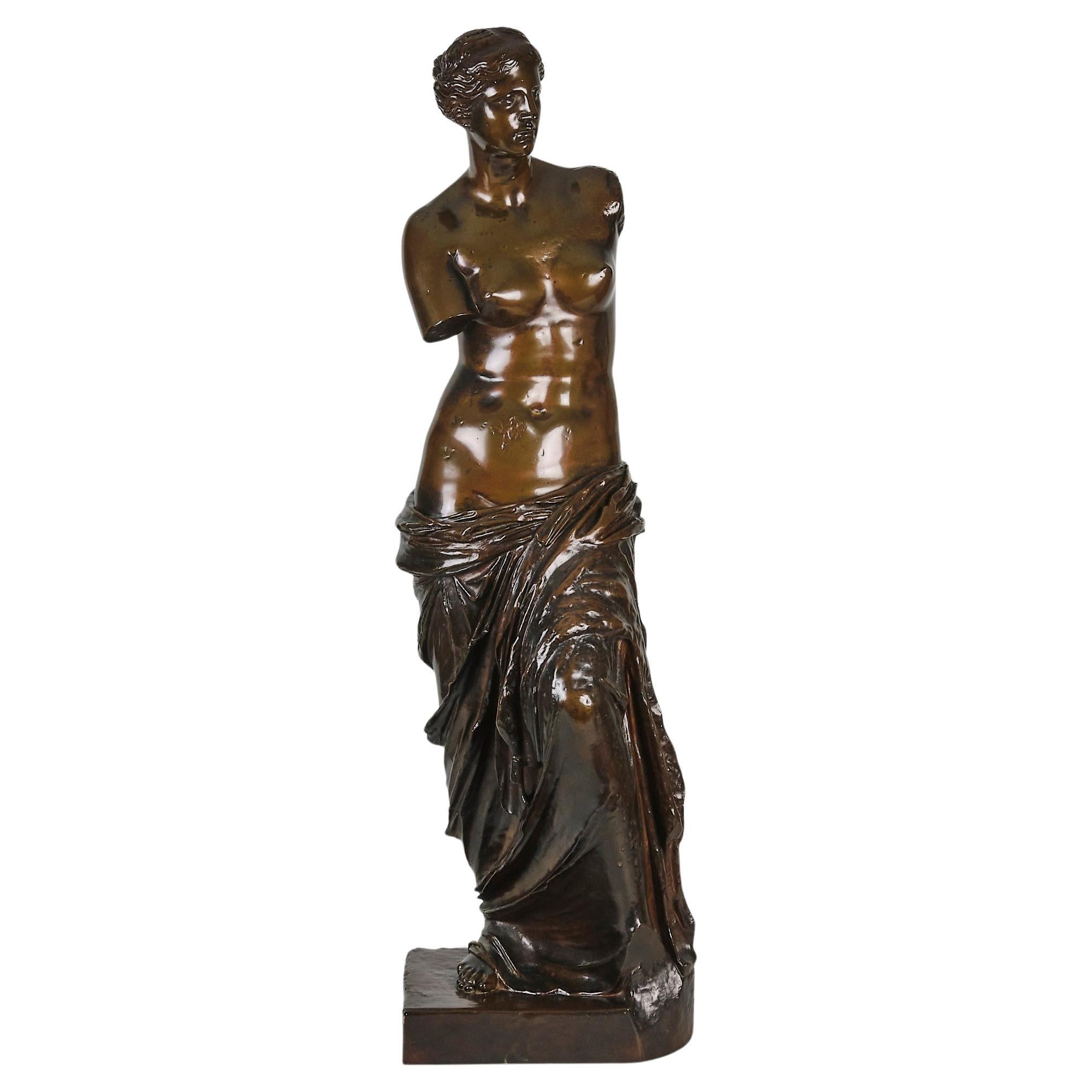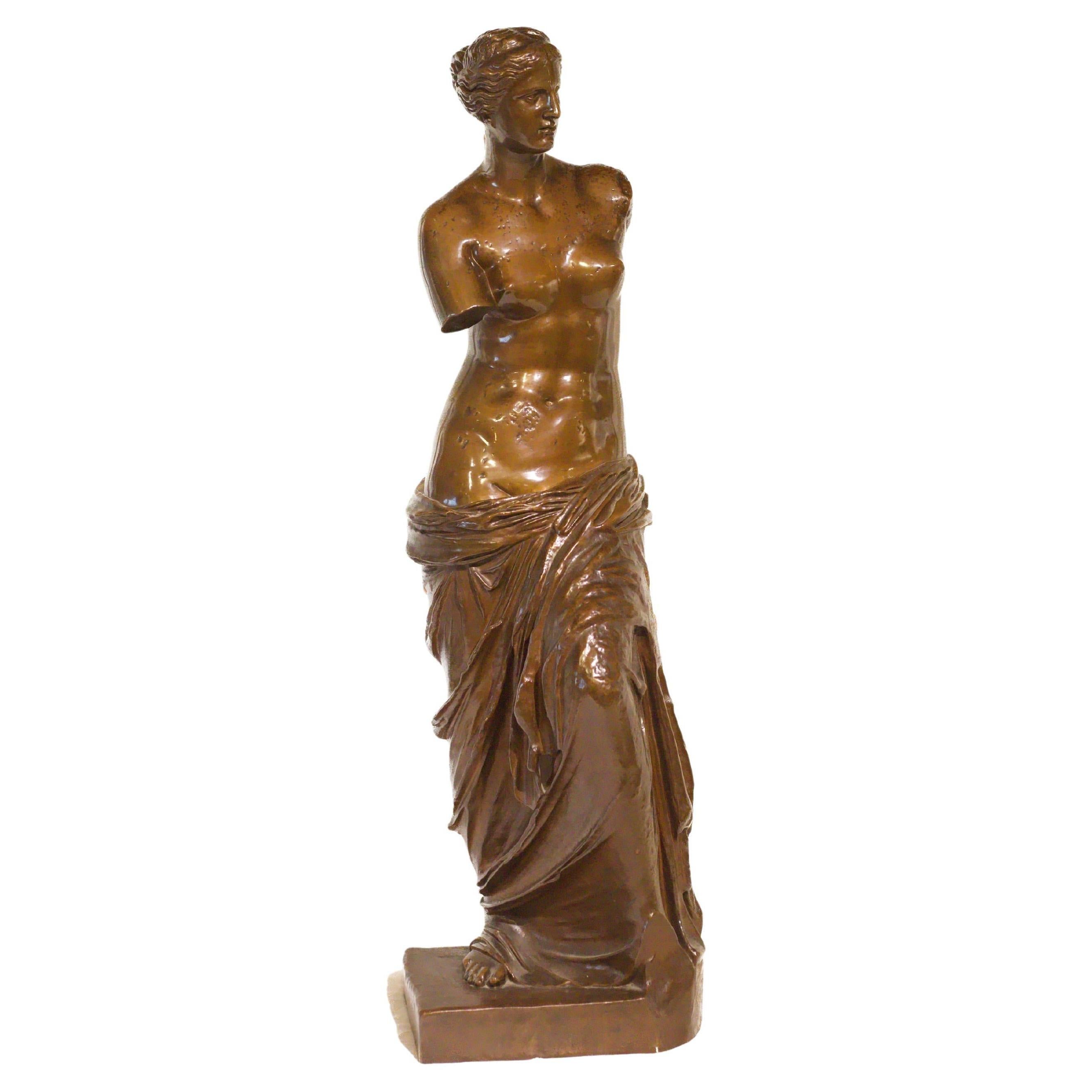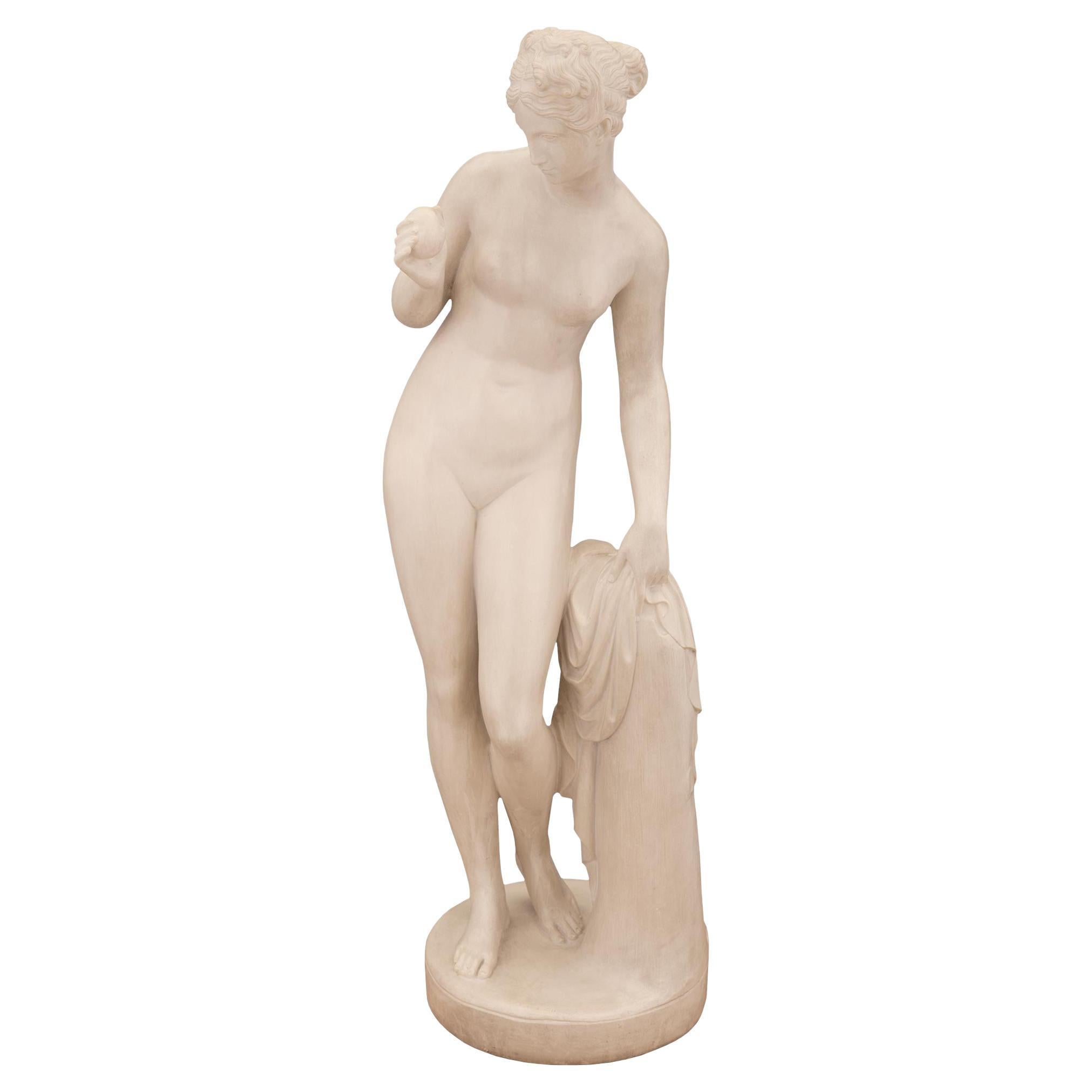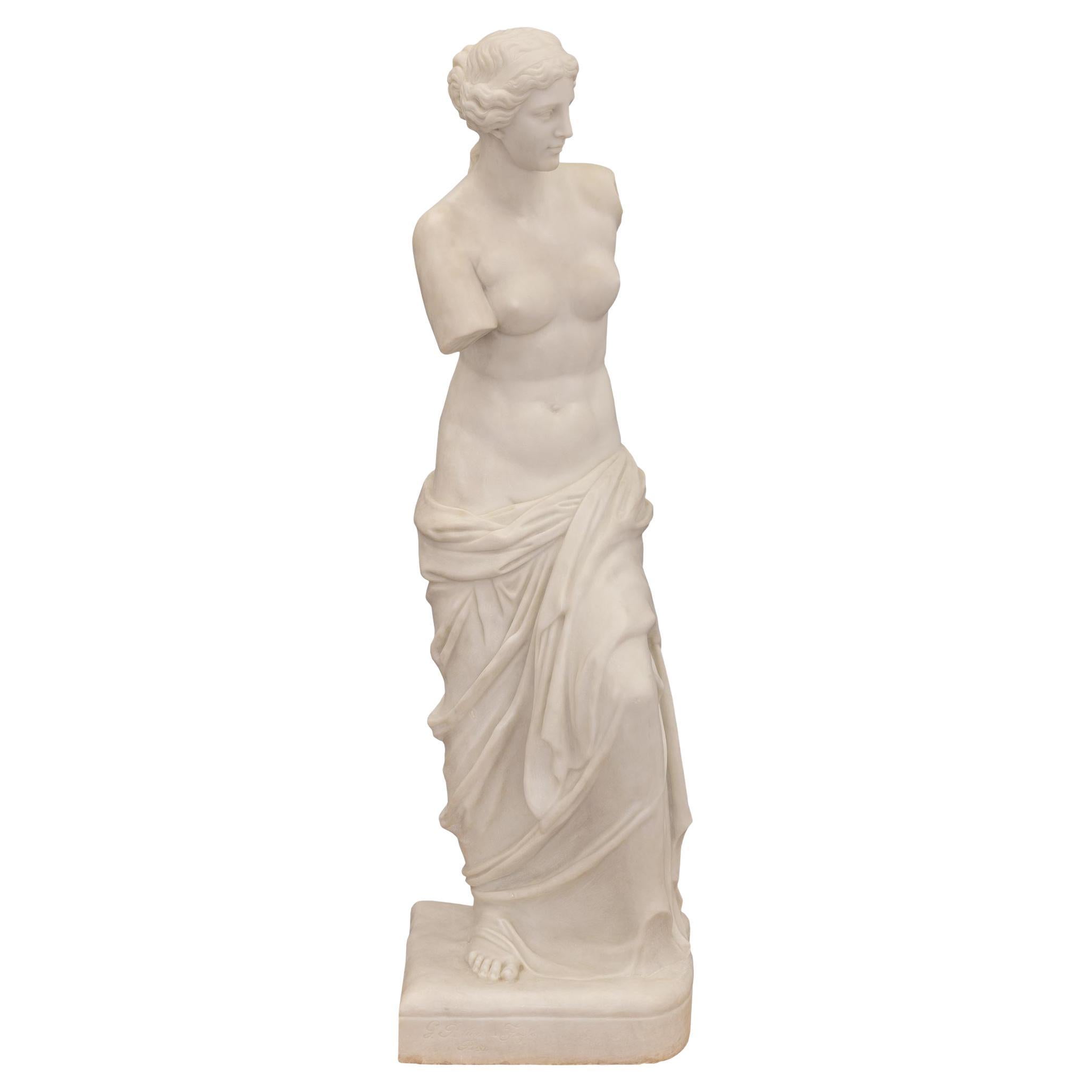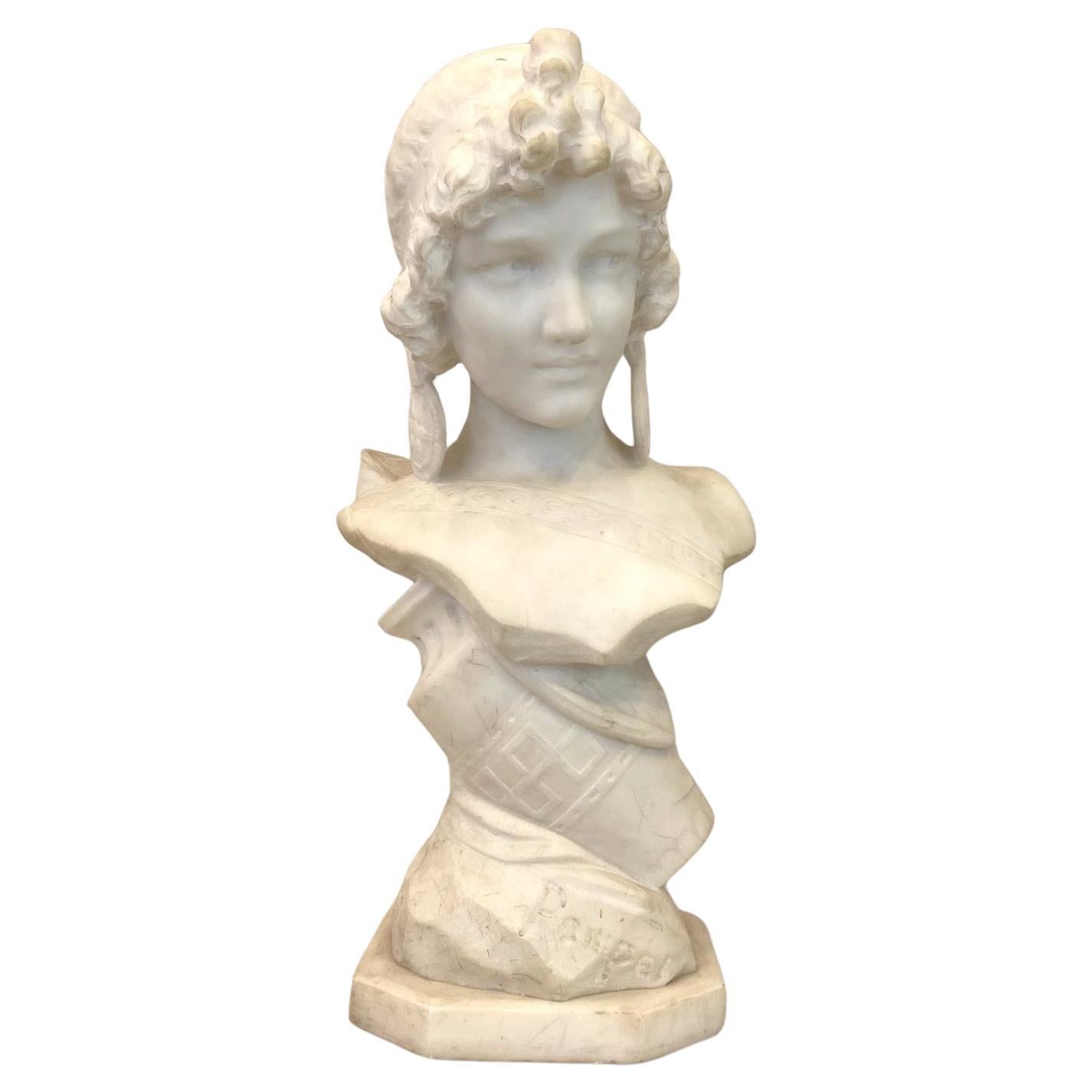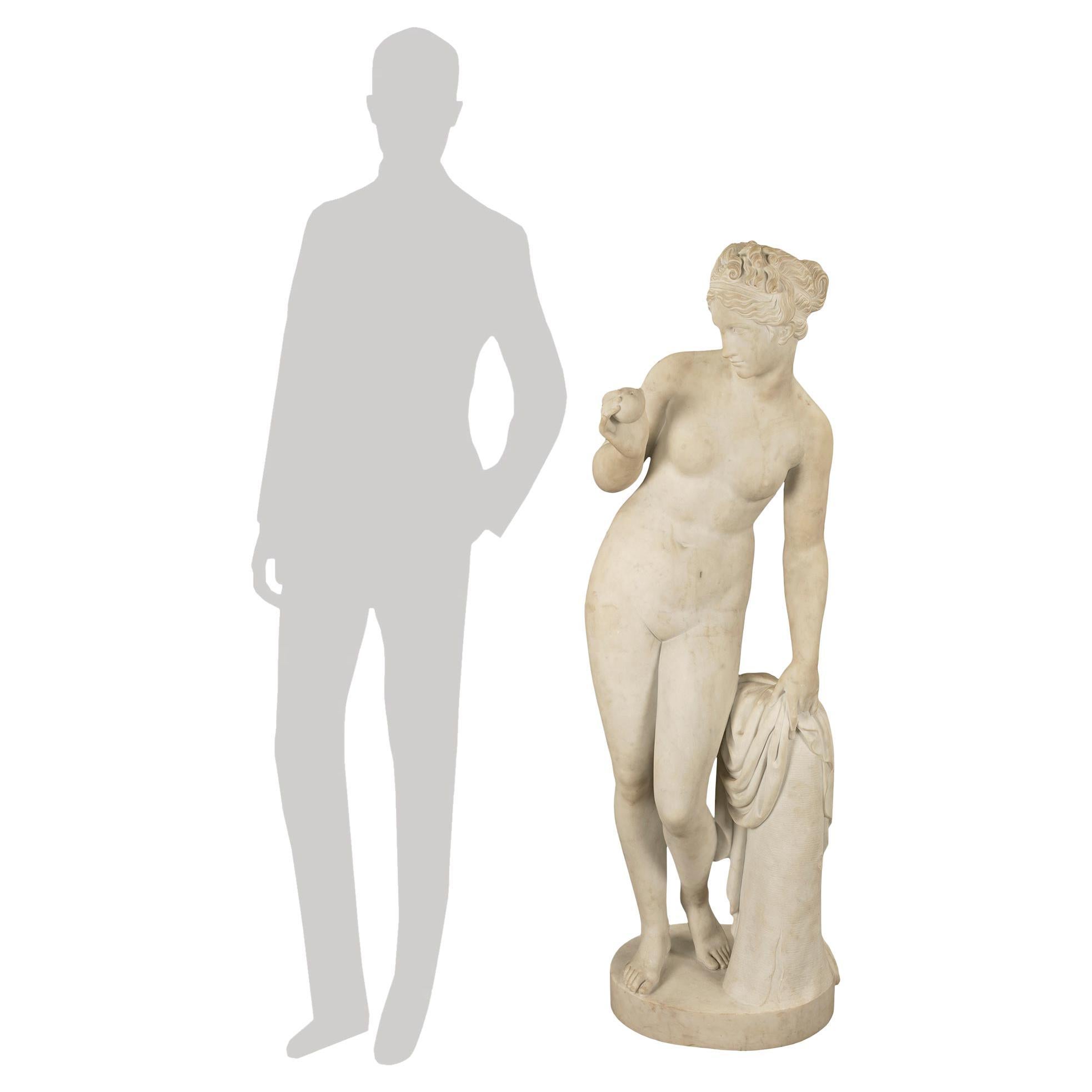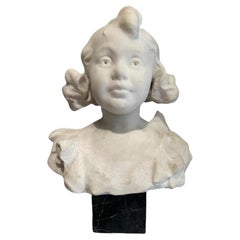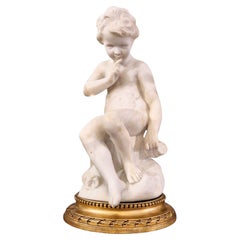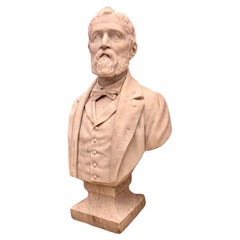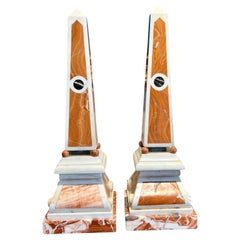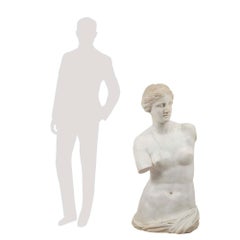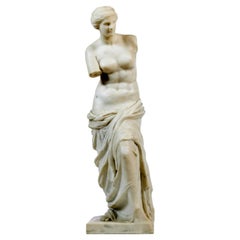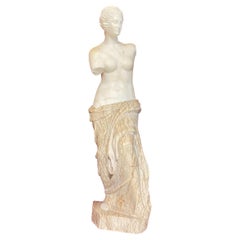
19th Century Sculpture Modelled after Venus de Milo in Veined & Carrara Marble
View Similar Items
Want more images or videos?
Request additional images or videos from the seller
1 of 13
19th Century Sculpture Modelled after Venus de Milo in Veined & Carrara Marble
About the Item
- Dimensions:Height: 24.22 in (61.5 cm)Width: 7.68 in (19.5 cm)Depth: 7.88 in (20 cm)
- Style:Napoleon III (Of the Period)
- Materials and Techniques:
- Place of Origin:
- Period:
- Date of Manufacture:1870s-1890s
- Condition:Wear consistent with age and use.
- Seller Location:NICE, FR
- Reference Number:1stDibs: LU9202237102972
About the Seller
5.0
Gold Seller
Premium sellers maintaining a 4.3+ rating and 24-hour response times
Established in 2003
1stDibs seller since 2023
24 sales on 1stDibs
Typical response time: 3 hours
Authenticity Guarantee
In the unlikely event there’s an issue with an item’s authenticity, contact us within 1 year for a full refund. DetailsMoney-Back Guarantee
If your item is not as described, is damaged in transit, or does not arrive, contact us within 7 days for a full refund. Details24-Hour Cancellation
You have a 24-hour grace period in which to reconsider your purchase, with no questions asked.Vetted Professional Sellers
Our world-class sellers must adhere to strict standards for service and quality, maintaining the integrity of our listings.Price-Match Guarantee
If you find that a seller listed the same item for a lower price elsewhere, we’ll match it.Trusted Global Delivery
Our best-in-class carrier network provides specialized shipping options worldwide, including custom delivery.More From This Seller
View AllLate 19th-Century Carrara Marble Bust of a Young Girl
Located in NICE, FR
This bust of a young girl in Carrara marble from the late 19th century beautifully captures the innocence and charm expressed on the subject's face. The sculpture exudes remarkable e...
Category
Antique 19th Century French Napoleon III Busts
Materials
Carrara Marble
$2,277 Sale Price
20% Off
Carrara marble statue of Cupid, 19th century, after Étienne Maurice Falconet
By Étienne Maurice Falconet
Located in NICE, FR
White marble sculpture of Cupid based on a work by Étienne Maurice Falconet (1716-1791), the original of which is in the Louvre Museum in Paris. It is presented on a gilded wooden base with a pearl stripe.
Very fine craftsmanship and high quality for this 19th-century white veined Carrara marble statue of Cupid.
Height with base: 59 cm.
Weight: 30 kg.
The original work, also known as “L'Amour menaçant...
Category
Antique 1860s French Classical Roman Figurative Sculptures
Materials
Carrara Marble
19th Century Bust of an Aristocrat in Marble by Joseph Vallet (1841-1920)
Located in NICE, FR
A large bust of a noble man from the end of the 19th century in carrara marble signed by French sculptor, Joseph Vallet, who born in La Boisiére du Doré on August 6, 1841, and died i...
Category
Antique 19th Century French Napoleon III Busts
Materials
Carrara Marble
$6,284 Sale Price
20% Off
19th Century Pair of Obelisks in Carrara Marble, Sicilian Jasper & Black Portoro
Located in NICE, FR
These marble obelisks are unique pieces that bring an elegant and majestic touch to any space. They are imposing centerpieces that evoke the grandeur and history of ancient Egypt. Ma...
Category
Antique 19th Century Italian Napoleon III Obelisks
Materials
Carrara Marble
19th Century Bust of a Young Lady in White Marble by Flli Romanelli
Located in NICE, FR
We present you with this exquisite large bust of a beautiful young lady with a large hat, carved in prestigious antique white statuary marble. A unique work of the highest quality an...
Category
Antique 19th Century Italian Art Nouveau Busts
Materials
Marble
$3,288 Sale Price
20% Off
Young woman with jug, Carrara marble, signed Bonnal, early 20th century
Located in NICE, FR
Charming sculpture of a young woman carrying a jug, signed by Bonnal on the back and inspired by “Rebecca at the Well” by 19th-century Italian School artist Guglielmo Pugi.
The sculpture in fine white Carrara marble, created between the end of the 19ᵉ century and the beginning of the 20ᵉ century, depicts a pensive, lascivious young woman dressed in the fashion of the turn of the century: she wears a turban from which escapes curls of hair and a bracelet characteristic of the period; the cut of her dress is also very elaborate for a simple peasant woman. The finely embroidered motifs on the dress and turban are further evidence of the sculptor's mastery.
A delicate, feminine piece that will look great in a hallway or on a dressing table, and will make a lovely gift for an aesthete woman.
Guglielmo Pugi lived in Florence, where he ran a sculpture workshop with his two sons. Their workshop, “Guglielmo Pugi e Figli”, was mainly dedicated to exports, particularly to the United States. Guglielmo Pugi's work, emblematic of the Art Nouveau style, is characterized by direct carving in alabaster and Carrara marble (often white or veined).
Some of his sculptures are now housed in Volterra's Historical Alabaster Museum. Many of his works were shown at major international exhibitions, such as the 1901 Pan-American Exposition in Buffalo and the 1904 Exposition...
Category
Antique Early 1900s Art Nouveau Figurative Sculptures
Materials
Marble
You May Also Like
Italian 19th Century White Carrara Marble of Venus De Milo
Located in West Palm Beach, FL
A stunning and large scale Italian 19th century white Carrara marble of Venus de Milo. She is wonderfully sculpted with striking proportions and attention to detail. Venus de Milo is an ancient Greek statue created between 130 and 100 BC and believed to depict Aphrodite, the Greek goddess of love and beauty. She is considered one of the most famous works of ancient Greek sculpture...
Category
Antique 19th Century Italian Figurative Sculptures
Materials
Marble
" Venus of the Nile " 19th Century Italian Carrara Marble Sculpture
Located in Madrid, ES
" Venus of the Nile "
19th century Italian Carrara marble sculpture
Italy
Height: 90 cm
good conditions.
Category
Antique 19th Century Italian Baroque Figurative Sculptures
Materials
Carrara Marble
Large 19th Century Grand Tour Venus de Milo Marble Column
Located in West Palm Beach, FL
Large 19th-century Grand Tour Venus de Milo Marble Column
France, circa 1880
A magnificent 19th-century Grand Tour Venus de Milo marble column from...
Category
Antique 19th Century French Grand Tour Figurative Sculptures
Materials
Marble, Bronze
$3,600 Sale Price
20% Off
Italian 19th Century White Carrara Marble Statue Of Venus De Medici
Located in West Palm Beach, FL
A most elegant Italian 19th century white Carrara marble statue of Venus de Medici. This stunning statue depicts the elegant Venus caught in a momentary pose, as if surprised in the ...
Category
Antique 19th Century Italian Figurative Sculptures
Materials
Marble
Venus Medici, Head in Carrara White Marble, Late 19th Century
Located in Madrid, ES
Venus medici - head in carrara white marble.
Late 19th century
Measures: Height 36 cm
Width 20 cm
Depth 19 cm
Weight 15 kg
Maximum projection 44 cm
Statue base 12 x 10 cm
Place where...
Category
Antique Late 19th Century Italian Classical Roman Figurative Sculptures
Materials
Carrara Marble
Late 19th Century Art Nouveau Sculpture "Venus de Milo" by F. Barbedienne
By F. Barbedienne Foundry
Located in London, GB
A large and impressive late 19th Century bronze study of the famous Venus de Milo sculpture of antiquity with excellent rich brown patina and good hand finished surface detail, inscribed F.Barbedienne foundry
ADDITIONAL INFORMATION
Height: 95 cm
Width: 28 cm
Depth: 28 cm
Condition: Excellent Original Condition
Circa: 1890
Materials: Bronze
Foundry: F.Barbedienne
SKU: 7741
ABOUT
The Barbedienne Foundry is a famous 19th century bronze foundry, whose statues and art objects became rapidly very renowned. This bronze studio co-worked with other trades, and put his name to a great variety of works, such as furnishing in particular. Attending every World's Fair of its time, the Barbedienne Foundry was regularly awarded, notably at the World's Fair of 1855 where it was awarded the Great Medal of Honor.
A Parisian bronze maker and caster, Ferdinand Barbedienne (1810-1892) creates a firm in 1839 in collaboration with Achille Collas, the inventor of the mechanical method to obtain copies of sculptures at a smaller scale. With this groundbreaking proceed, they facilitated an unprecedented production. Under the “Collas et Barbedienne” name, they specialized in Antiquity copies and perfected new chemical methods for the color and patina finish of their bronzes. As a true Romantic, Ferdinand Barbedienne is committed to democratization of arts, he thus realizes numerous Antiquity copies and stimulates his contemporaries’ works broadcasting. A great deal of famous sculptures are hence cast by the Barbedienne Foundry. All his life, Barbedienne co-worked with the greatest artists, sculptors or designers of his time, such as Edouard Lievre, Ferdinand Levillain, Attarge, Aizelin, Barye or Fremiet.
Statues aside, he products a great deal of decorative artifacts, such as clocks, vases, mirrors, etc. Since 1855, Ferdinand Barbedienne collaborates with the famous decoration designer Louis-Constant Sévin (1821-1888). Joining the firm as a sculptor-designer, he stays loyal to it his life long, always finding more new designs for daily objects, which hence become true art works. Sevin’s creations, specialized in the “Neo-Greek” style, were particularly appreciated for antiquity reference in decorative arts, just like the great mirror preserved by the Orsay Museum. He also teams up with enamelers including Alfred Serre, and develops a set of “cloisonnés” enamels that made the headlines at the World's Fair of 1862 in London, which was the very beginning of the art of enamel’s return. In collaboration with Serre, Barbedienne realized between 1878 and 1889 the Monumental Clock in Renaissance style, decorated with enamels, which is preserved in the Paris City Hall.
Venus de Milo
Facts about Venus de Milo sculpture.
For much of the world, the mystery of the Venus de Milo lies in her missing arms. But there’s much more to this iconic statue than a couple of absent appendages.
1. Venus de Milo‘s title is a bit misleading.
It’s popularly believed that this Grecian statue depicts the Greek Goddess of love and beauty, who was often rendered half-naked. However, the Greeks would have called this deity Aphrodite. Nonetheless, the Roman-inspired Venus de Milo caught on.
2. She’s named in part for where she was discovered.
On April 8, 1820, a farmer named Yorgos Kentrotas came across the statue in pieces within the ruins of an ancient city on the island of Milos (formerly known as Melos).
3. Alexandros of Antioch is credited with her creation.
A sculptor of the Hellenistic period, Alexandros is believed to have carved this masterpiece between 130 and 100 BCE. The inscription on the plinth—the slab on which the statue rested—that identified him as Venus de Milo‘s creator was lost nearly 200 years ago.
4. She might not be Venus.
Some have suggested the sculpture is not Aphrodite/Venus, but Amphitrite, the sea goddess who was particularly adored on Milos. Still others have proposed she’s Victory, or perhaps a prostitute. With her arms long missing, would-be context clues have been lost for centuries. A spear could have meant one thing, a spool of thread another. If she held an apple—as some reports claim—it could mean she was Aphrodite, holding the award given to her by Paris before the Trojan War began. To this day, it’s a matter of passionate debate.
5. She became a gift to the King of France.
When Kentrotas called upon a French naval officer to help him unearth the spectacular sculpture, he began a chain of events that would eventually lead to the Marquis de Rivière presenting Venus de Milo to Louis XVIII. In turn, the ruler gave the statue to the Louvre, where it is on display to this very day.
6. The loss of her limbs is the fault of the French.
Kentrotas did find fragments of an arm and a hand when he uncovered the statue in the ruins, but as Venus de Milo was being reassembled, those arms were discarded for having a “rougher” appearance. Modern art historians believe that the variation of finish does not mean those arms did not belong to Venus, but both the arms and the original plinth have been lost since the piece moved to Paris in 1820.
7. The original plinth was ditched on purpose.
Sight unseen, early 19th century art historians decided the newly discovered Venus must have been the work of Greek artist Praxiteles, and publicized the work as such. This attribution would have placed the piece in the Classical period (5th through 4th centuries BCE), which was more respected artistically than the Hellenistic period. To save face and better promote Venus de Milo—even at the cost of misinforming the public—the plinth was removed before it was presented to the King.
8. Venus de Milo was meant to make up for a national embarrassment.
During his conquests, Napoleon Bonaparte had plundered one of the finest examples of Greek sculpture, Venus de’ Medici, from Italy. In 1815, the French government returned that beloved sculpture, but in 1820, France embraced the chance to fill the hole its absence left in the French culture and national pride. As such, Venus de Milo was promoted as being even greater than Venus de’ Medici upon her Louvre debut. The ploy worked, and the piece was met with almost universal praise from artists and critics.
9. Renoir was not impressed.
Perhaps the most famous of Venus de Milo‘s detractors, the celebrated Impressionist painter dismissed this delicate depiction of grace and female beauty as “a big gendarme.”
10. She went into hiding during World War II.
By the autumn of 1939, war threatened to descend on Paris, so Venus de Milo along with some other priceless pieces, such as Winged Victory of Samothrace and Michelangelo’s Slaves, were whisked away for safekeeping at various châteaux in the French countryside.
11. She’s been robbed!
Venus is missing more than just her arms. She was originally draped in jewellery including a bracelet, earrings and a headband. These flourishes are long lost, but the holes for fixing them to the piece remain in the marble, giving clues to the missing accessories.
12. She lost her colour.
While it’s easy for today’s art admirers to think of Greek statues as white, the marble was often painted in the style of polychromy. However, no trace of the original paint scheme remains on Venus de Milo today.
13. She’s taller than most people.
Even with her slight slouch, Venus de Milo stands at 6 feet 8 inches tall.
14. She could be a copy.
Art historians have noted that Venus de Milo bears a striking resemblance to Aphrodite of Capua, which is a Roman era copy of a possibly late 4th century BCE bronze Greek original. That would be at least 170 years before Alexandros carved his goddess, leading some to speculate that both statues are actually replicas of an older statue...
Category
Antique Late 19th Century French Art Nouveau Figurative Sculptures
Materials
Bronze
Recently Viewed
View AllMore Ways To Browse
Korbel Mario
L Chalon Bronze
L Kley
L Louchets
Lalique Nude Figurine
Lee Duran
Les Girls Chiparus
Life Size Plaster Statue Goddess
Lladro Clown
Lladro Eskimo
Lladro Gres
Lladro Lady
Lucite Female Torso
Male Marble Nude Wrestling
Man And Woman Chinese Figurines
Marathon Statue
Marc Boffin
Marcel-André Bouraine On Sale
